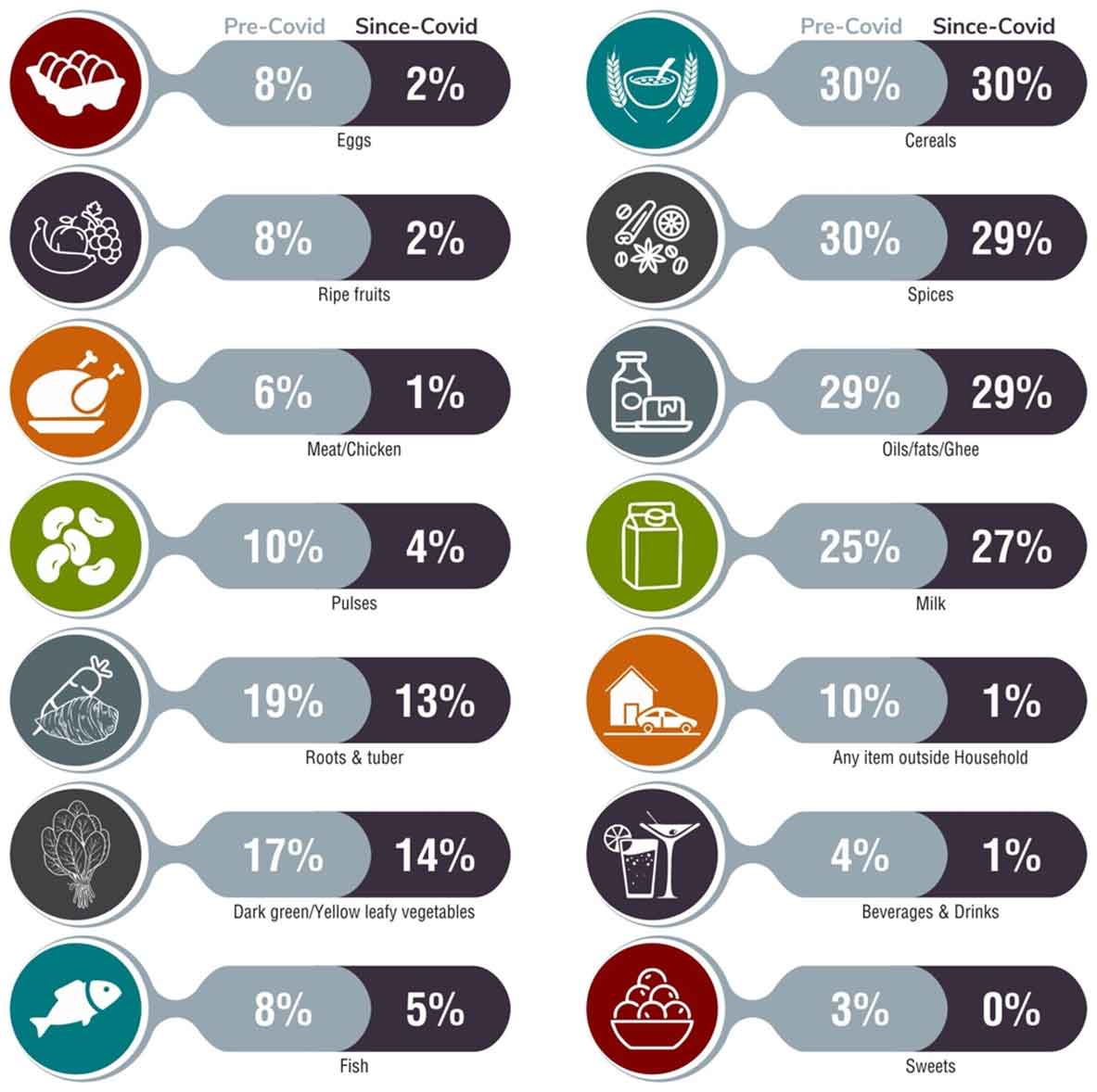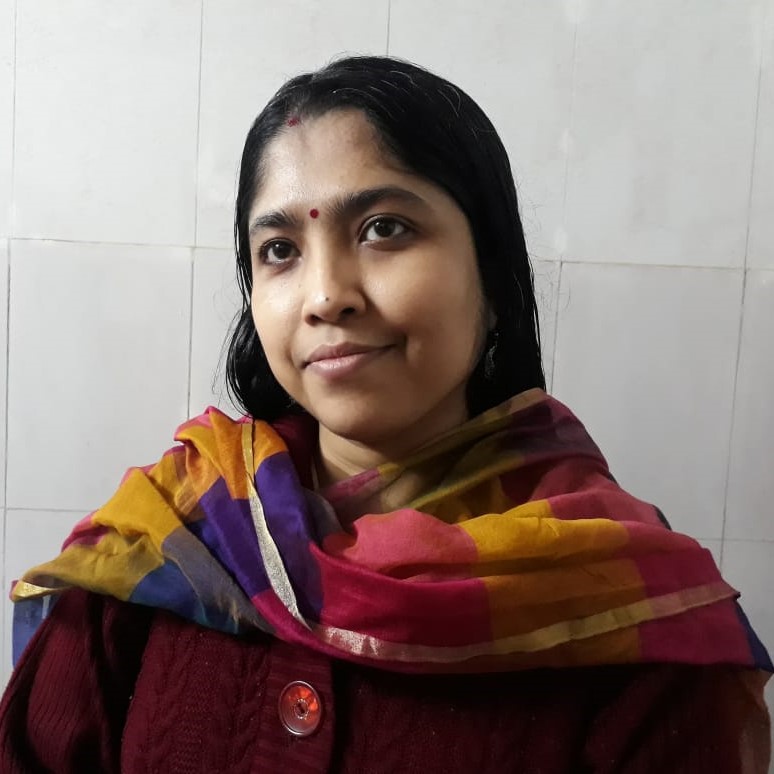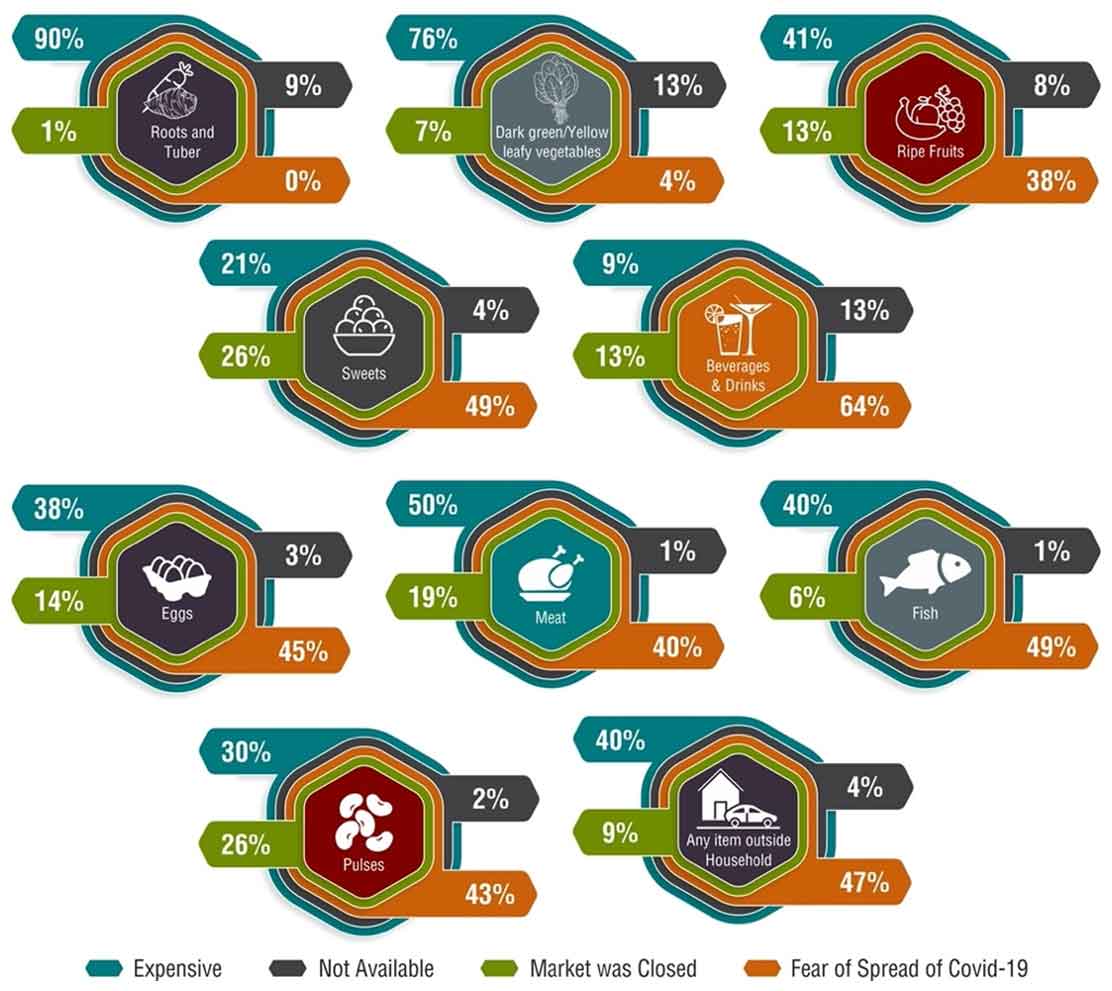Emerging research shows that Covid-19 has had a devastating impact on the already undernourished and marginalised populations, by affecting their access to food and nutrition, and consumption patterns. In this note, Dutta et al. discuss findings from their field study in rural Bihar and highlight three key reasons for reduced food consumption by households – fear of contracting Covid-19, price hikes, and closure of markets.
Food insecurity is of increasing concern globally as even before the ongoing Covid-19 crisis, 690 million people across the world were undernourished. If this trend continues, the number of people affected by nutrient deficiencies will exceed 840 million by 2030 (World Food Programme, 2020). Citing the examples of Mexico and Samoa, the latest report by the Food and Agriculture Organization (FAO) (2020) points out that those that face moderate food insecurity consume more foods that are less expensive on a per calorie basis (cereals, roots, tubers, and plantains), and consume lower quantities of expensive foods such as meat.
Covid-19 is having a devastating impact on the already undernourished and marginalised sections of the society, by affecting their access to food and nutrition, and consumption patterns (Drèze and Somanchi 2021). Many have also suffered from a lack of regular access to nutritious and sufficient food (WHO, 2020).
A healthy diet contains a balanced, diverse, and appropriate selection of foods eaten over a particular number of days. According to the World Health Organization (WHO), a healthy diet provides protection against malnutrition and non-communicable diseases (NCDs). On the other hand, food insecurity can cause deterioration of diet quality, undernutrition, and higher incidence of overweight and obesity.
Our survey in rural Bihar
As part of recent IGC research (Dutta, Madan and Mishra 2021), we analysed the impact of Covid-19 on the consumption of different food groups pre-pandemic (2016), and since the beginning of the Covid-19 induced lockdown, that is, the first wave of Covid-19 (24 March 2020 to 31 December 2020), among vulnerable households in rural Bihar. We surveyed 944 households spread across three regions of Bihar with varied agro-climatic conditions – north Bihar, central Bihar, and south Bihar – covering two districts from each region. We conducted a telephonic survey to collect information on the consumption of food groups before Covid-19 using a retrospective method, and the current period based on ‘recall’ method (with three recall periods: 30 days, 7 days, and 24 hours).
As seen in Figure 1 except for food groups such as cereals, and oils and spices, there has been a drastic reduction in household consumption of food items. Consumption of meat has reduced by 83%, fruits and eggs by 75%, and pulses by 60% – since the beginning of the pandemic. Consumption of fish has declined by 38% whereas consumption of roots and tubers, and green and yellow leafy vegetables has reduced by 32% and 18%, respectively. Surprisingly, milk shows an increase of consumption from 25 days to 27 days, on average, in a month.
Figure 1. Household consumption rate of food groups

Note: ‘Pre-Covid’ refers to time period before 24 March 2020, and ‘since-Covid’ refers to time period of 24 March 2020 to 31 December 2020.
Examining consumption patterns
We find that the major reasons for the overall reduction in food consumption are the fear of contracting Covid-19, price hikes, and closure of markets. However, the reasons for the reduction in consumption also vary across different food groups. As seen in Figure 2, according to half of the households surveyed, they have reduced their consumption of fish due to fish being expensive, and two-fifths of the households state that they have reduced its consumption due to the fear of contracting Covid-19. This is likely due to the fear of purchasing fish from distant markets, unlike meat and vegetables which are easily accessible in the vicinity. Consumption of roots and tubers, and green and yellow leafy vegetables has declined likely due to a hike in the price of products, and the non-availability of the items. Not surprisingly, approximately three-fourths of the households surveyed revealed that they were forced to reduce their consumption of vegetables due to their soaring prices. Almost half the respondents state that they have reduced their consumption of pulses due to the fear of contracting Covid-19 while going to purchase it, one-third of the respondents state pulses being expensive as the main reason, and about one-fourth of the respondents cite markets being closed as the major reason for lower consumption during the pandemic. On the other hand, a relative increase in milk consumption could be attributed to travel restrictions affecting the sale of milk, resulting in the self-consumption of milk by milch-rearing households since the beginning of the pandemic.
Figure 2. Reasons for decrease in household food consumption, by food group (% of surveyed households
Conclusion
There are growing concerns that the pandemic has resulted in food insecurity and malnutrition among the poor in India (Swinen 2020), and specifically in Bihar (Population Council Institute, 2021), as the lockdowns result in market supply disruptions and threaten to aggravate the hunger situation owing to economic hardships – particularly for those who had diminished food and nutrition security even before the pandemic. India faces a challenging trade-off between implementing measures to contain the spread of Covid-19 and exacerbating the hunger crisis. Covid-19 is likely to undermine the efforts put to achieve the second Sustainable Development Goal of “Zero Hunger” (Committee on World Food Security, 2020).
Efforts must also be made to ensure timely access to benefits of government schemes, for enhancing the food and nutritional status of the poor, and mitigating the problems of malnourishment and hunger, particularly during the pandemic. Assistance needs to be extended to the rural poor in this regard, through government schemes and programmes including Mid-day Meal Scheme1, and cash transfers to beneficiaries of the Integrated Child Development Scheme (ICDS)2. Given the restrictions on mobility and limited transportation facilities, it is also important to improve last-mile connectivity for Pradhan Mantri Jan Dhan Yojana (PMJDY)3 and address constraints in accessing banks.. Benefits of the Public Distribution System can also be extended to migrant workers in case of lack of identification or documentation proof through certification by elected representatives or other government officials. In order to address this challenge, One Nation One Ration Card (ONORC) should be adopted.
I4I is now on Telegram. Please click here (@Ideas4India) to subscribe to our channel for quick updates on our content.
Notes:
- Launched in 1995 as a centrally sponsored scheme, the Mid-Day Meal (MDM) scheme provides children in government and government-aided schools (later extended to cover more groups of schools) with a nutritious, prepared midday meal. The scheme aims to improve the nutritional status of children studying in class one to eight, and to encourage children from disadvantaged sections to attend school more regularly and concentrate on school activities.
- The ICDS scheme offers supplementary nutrition, preschool non-formal education, nutrition and health education, immunisation, health check-ups, and referral services to children in the age group of 0-6 years, along with support to pregnant women and lactating mothers.
- Pradhan Mantri Jan Dhan Yojana is a financial inclusion programme of the Government of India, which aims to expand access to financial services such as bank accounts, remittances and insurance among Indian citizens.
Further Reading
- Committee on World Food Security (2020), ‘Impacts of COVID-19 on food security and nutrition: Developing effective policy responses to address the hunger and malnutrition pandemic’, High Level Panel of Experts Issue Paper.
- Dutta, Swati, A Madan and SK Mishra (2021), ‘Food security during pandemic times: Insights and perspectives from rural Bihar’, International Growth Centre.
- FAO (2020), ‘The state of food security and nutrition in the world: Transforming food systems for affordable healthy diets’, Report.
- Swinen, J (2020), ‘Will COVID-19 cause another food crisis? An early review’, International Food Policy Research Institute.
- Drèze, J and A Somanchi (2021), ‘The Covid-19 crisis and food security’, Ideas for India, 21 June.
- WHO (2020), ‘The state of food security and nutrition in the world’, Report.
- FAO (2020), ‘Hunger and food security’, Article.
- Population Council Institute (2020), ‘Effects of Covid-19 on Nutrition in Bihar’, Report.




 25 August, 2021
25 August, 2021 







Comments will be held for moderation. Your contact information will not be made public.